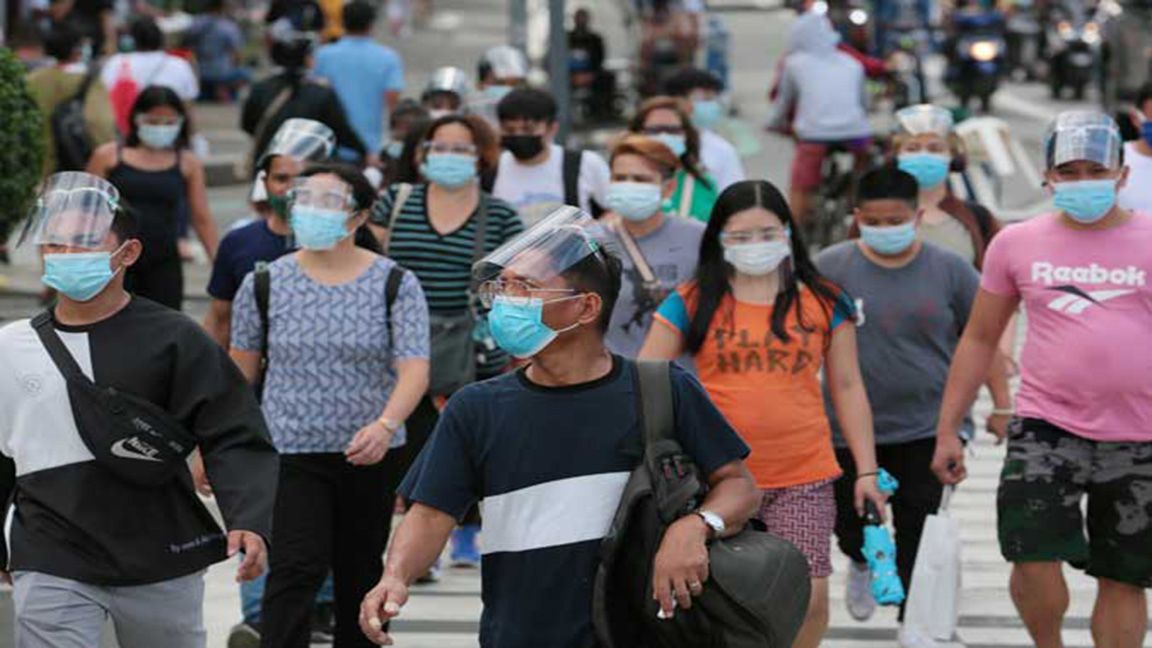Aside from NCR, areas which will see a relaxation of some health restrictions include the provinces of Cavite, Bulacan, Rizal, Batanes, Biliran, Southern Leyte, and Basilan.
Residents of Metro Manila and seven other provinces will find themselves under more relaxed conditions once again.
The Inter-Agency Task Force for the Management of Infectious Diseases (IATF-EID) has decided to place the National Capital Region, along with seven other provinces, under a less restrictive Alert Level 2 status from February 1 to 15.
Aside from NCR, areas which will see a relaxation of some health restrictions include the provinces of Cavite, Bulacan, Rizal, Batanes, Biliran, Southern Leyte, and Basilan, IATF co-chair and acting Presidential Spokesperson Karlo Nograles announced Sunday (January 30).
Under Alert Level 2, certain establishments and activities are allowed at 50-percent capacity indoors for fully vaccinated adults (and minors, even if unvaccinated), and 70-percent capacity outdoors.
The "no vaccination, no ride" policy being implemented on public transportation in Metro Manila may also be suspended under Alert Level 2, officials earlier said.
Meanwhile, the following areas will remain under Alert Level 3 for the same period:
- Cordillera Administrative Region: Abra, Apayao, Baguio City, Benguet, Kalinga and Mountain Province
- Region I: Dagupan City, Ilocos Norte, Ilocos Sur, La Union and Pangasinan
- Region II: City of Santiago, Cagayan, Isabela, Nueva Vizcaya and Quirino
- Region III: Angeles City, Aurora, Bataan, Nueva Ecija, Olongapo City, Pampanga, Tarlac and Zambales
- Region IV-A: Batangas, Laguna, Lucena City and Quezon Province
- Region IV-B: Marinduque, Romblon, Occidental Mindoro, Oriental Mindoro and Puerto Princesa City
- Region V: Albay, Camarines Norte, Camarines Sur, Catanduanes, Masbate, Naga City and Sorsogon
- Region VI: Aklan, Antique, Bacolod City, Capiz, Iloilo City, Iloilo, Negros Occidental and Guimaras
- Region VII: Cebu City, Lapu-Lapu City, Mandaue City, Bohol, Cebu, Negros Oriental and Siquijor
- Region VIII: Ormoc City, Tacloban City, Eastern Samar, Leyte, Northern Samar and Western Samar
- Region IX: City of Isabela, Zamboanga City, Zamboanga Del Sur, Zamboanga del Norte and Zamboanga Sibugay
- Region X: Bukidnon, Cagayan de Oro City, Iligan City, Lanao del Norte, Misamis Occidental and Misamis Oriental
- Region XI: Davao City, Davao Del Sur, Davao Del Norte, Davao Oriental and Davao de Oro
- Region XII: General Santos City, North Cotabato, Sarangani, South Cotabato and Sultan Kudarat
- Region XIII: Surigao del Norte, Surigao Del Sur, Agusan Del Norte, Agusan del Sur and Butuan City
- Bangsamoro Autonomous Region in Muslim Mindanao: Maguindanao, Cotabato City and Lanao Del Sur.
OCTA Research had earlier said Metro Manila and the provinces of Cavite and Rizal are now at "moderate risk" for Covid-19, after data showed a downtrend in the number of additional Covid-19 cases during the past week.
According to OCTA Research Fellow Dr. Guido David, the Covid-19 reproduction rate is now “very low” as reported Saturday (January 29), in NCR with 0.47, Cavite with 0.69, and Rizal with 0.54.
Meanwhile, the provinces of Batangas, Laguna and Quezon are still classified as "high risk" as the case growth rate in Batangas is at -48%, Laguna is at -60%, and Quezon is at -28%.
Authorities continue to remind the public to adhere to strict health protocols.
(With report from GMA News)
Tags: #Covid19, #AlertLevelSystem, #MetroManila
